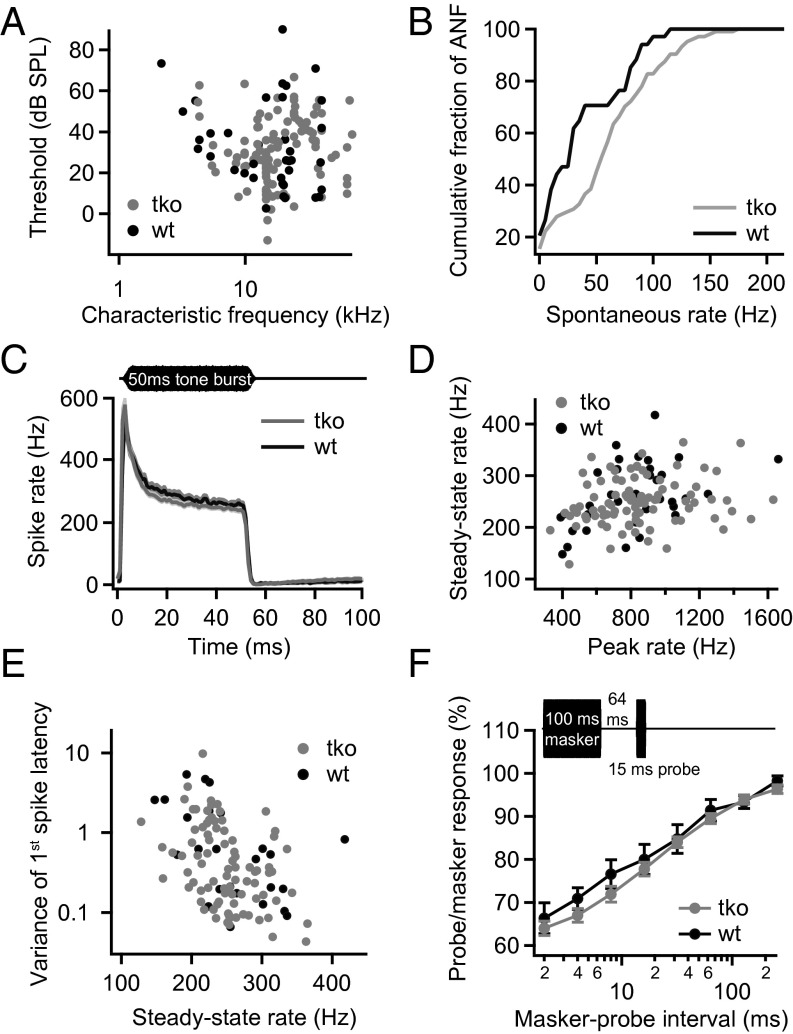Fig. 6.
Disruption of PVα, CB, and CR has little impact on sound encoding by single SGNs. (A) Thresholds measured at the CF of each auditory nerve fiber. The thresholds of the TKO fibers (gray, n = 111) were comparable to WT controls (black, n = 37). (B) Spontaneous rate distributions in TKO mice (gray, n = 104) and control groups (black, n = 34). Higher spontaneous rates were observed in SGNs of the TKO animals. (C) Mean peristimulus time histograms (±SEM) plotting the instantaneous spiking rate in 1-ms time bins over the time course of stimulation with tone bursts at the CF of each SGN, 30 dB above threshold. The rates and the time course of adaptation were similar in TKO (gray, n = 87) and WT SGNs (black, n = 35). (D) The analysis of the peak rates (rate in largest 1-ms bin) vs. the steady-state spike rates (averaged over 10 ms from 35 ms after stimulus onset) shows comparable rates between TKO SGNs (gray) and WT controls (black). (E) The variance of the first spike latency was similar between fibers from TKO mice and WT controls. (F) Recovery from adaptation probed by a forward-masking paradigm (Inset): maximal masking and the time course of recovery were similar for TKO (gray, n = 35) and WT controls (black, n = 8). Stimuli were applied at CF, 30 dB above threshold.

